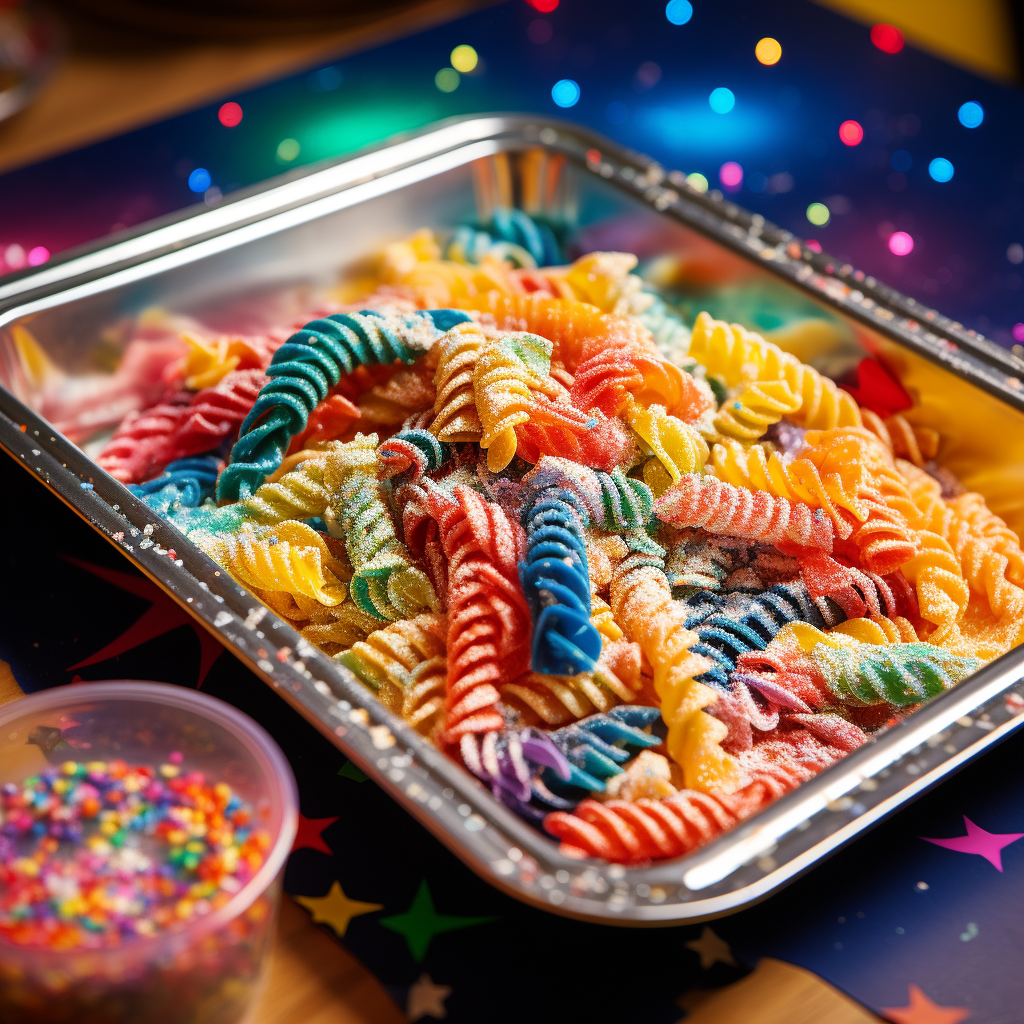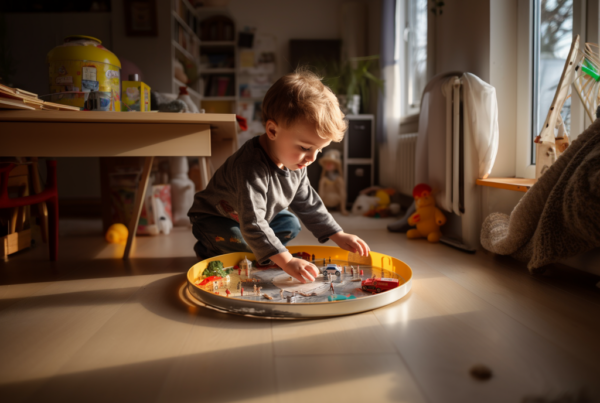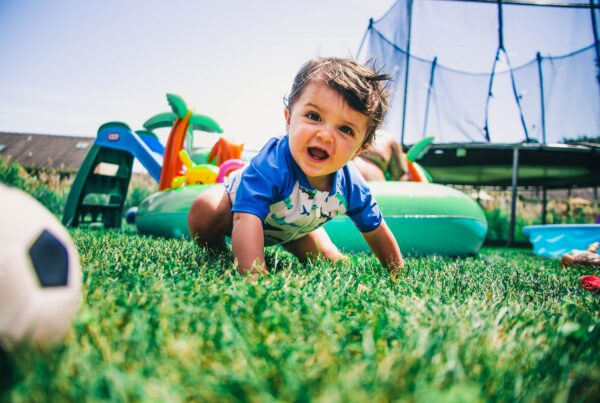In the realm of early childhood education and play, tuff trays, also known as tuff spots, have emerged as a versatile and engaging tool for parents and educators. While their appearance may seem quite simple, the potential for fostering creativity, learning, and development in children is immense. This comprehensive guide delves into “what are tuff trays“, exploring their features, benefits, and the myriad of ways they can be used to enhance a child’s play and learning experience.
Understanding the Tuff Tray
At its core, a tuff tray is a large, robust plastic tray. Its design is simple, yet incredibly effective for a variety of uses. The tray is typically octagonal in shape, featuring raised sides that are perfect for containing different materials. This design makes it an ideal platform for all kinds of messy play, from sand and water to paint and playdough. While certain tuff tray “traits” have emerged, such as size, shape and colour – these are the core principles needed for most tuff tray ideas.
The standard tuff tray measures approximately one metre in diameter, providing ample space for children to explore and engage with the materials within. Alongside the tray, a typical tuff tray set could also include an adjustable stand and a mat insert. In these circumstances, the stand elevates the tray off the ground, making it more accessible for children, while the mat insert can provide an additional layer of protection or theming for the activities.
The tuff tray’s design is rooted in practicality. Its raised sides help to contain materials, minimising mess and making it perfect for sensory play. The walled edges create a visual boundary for the activity. The plastic construction of the tray allows for easy cleaning, and its durability ensures it can withstand the rigours of children’s play. Furthermore, most tuff trays are suitable for both indoor and outdoor use, offering flexibility in where and how they can be used.
When is the Right Time for a Tuff Tray?
While tuff trays are generally suitable for children aged two to nine years old, the readiness of a child for a tuff tray is not strictly age-dependent. Instead, it’s more about their developmental stage and their interest in engaging in a wide range of messy play activities. As such, you may want to tailor different tuff tray ideas for different ages.
When a child begins to show signs of imaginative play and their fine motor skills are developing, a tuff tray can be a fantastic tool to further enhance these skills. The tray provides a contained, tactile environment where children can explore different materials and engage in creative play.
Communication skills are also a key factor in determining a child’s readiness for a tuff tray. It’s important that your child can engage in basic two-way communication, enabling them to listen, learn, and adapt to the activities that you’ve set up within the tray. While the level of communication will be dependant on the activity or theme, more complex ideas or activities will naturally need more direction. This ability to communicate effectively will allow them to get the most out of their tuff tray experience, whether they’re playing independently or in a group.
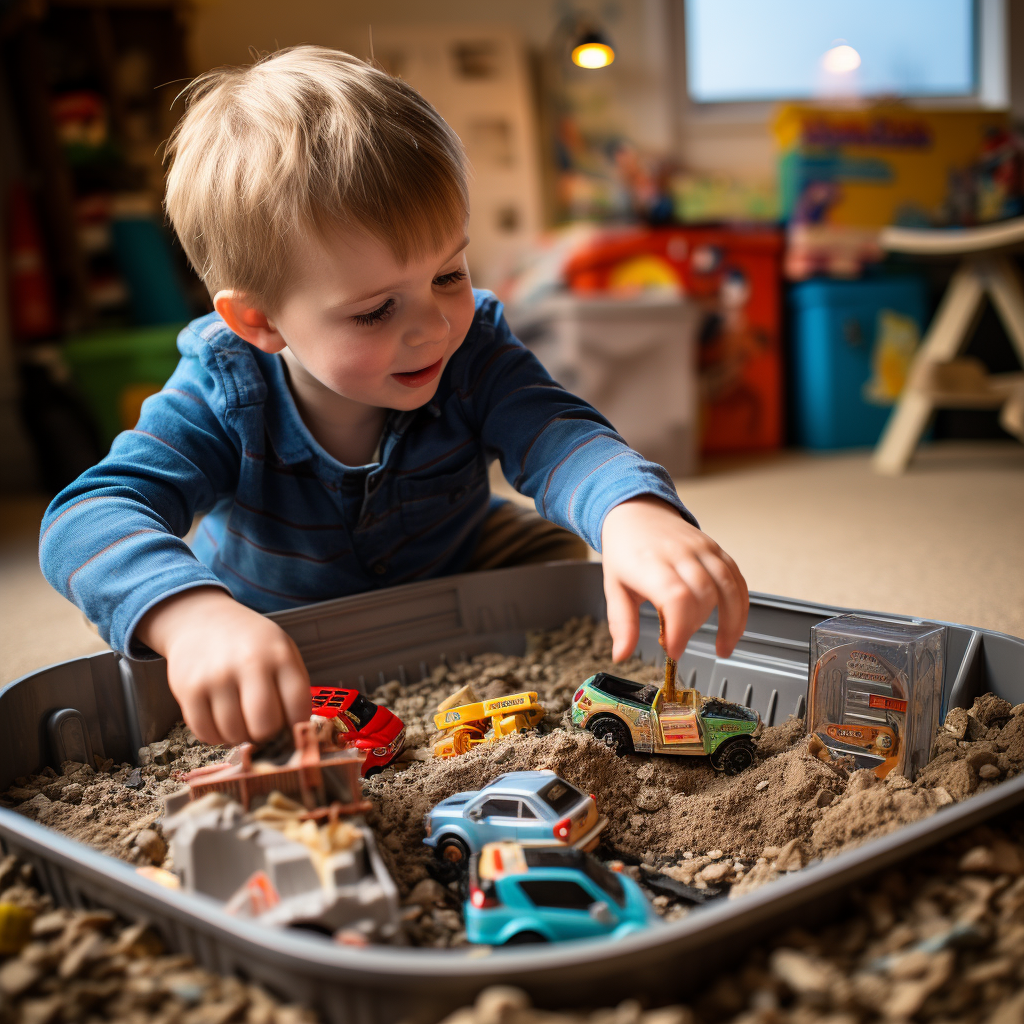
The Benefits of a Tuff Tray
The benefits of a tuff tray are varied and unique. One of the most immediate advantages is its ability to contain any mess. Whether your child is painting, playing with sand, or experimenting with slime, the tuff tray keeps the materials contained, saving your dining room table and other surfaces from the brunt of the mess.
Beyond its practical benefits, a tuff tray also offers significant developmental advantages. It encourages group play, fostering social skills as children learn to share the space and materials. It also promotes imaginative play, providing a blank canvas for children to create their own worlds and scenarios. Selecting the right ideas for your tuff tray will tailor these benefits.
The tuff trays durability and versatility means it can be used for years to come by one or more children. As children grow and their interests change, the tuff tray can adapt to accommodate new activities and materials. This longevity makes it a cost-effective addition to any playroom or early years setting.
Moreover, a tuff tray can be used for a wide range of activities. From sensory exploration with sand or water to creative activities like painting and crafting, the possibilities are endless. The tuff tray can also be used for more structured learning activities, such as science experiments, puzzles, and even dry food experimenting. This variation makes the tuff tray a valuable item for parents.
Key Considerations When Choosing a Tuff Tray
When choosing a tuff tray, there are several key factors to consider. If you’re are opting for a stand, ensure that the height adjustable. This feature is not just for the child’s growth but also for different activities that may require the tray to be at different heights. For instance, some activities may be more comfortable for the child if the tray is lower, while others may benefit from a higher position.
While Tuff Trays are great for outdoor play, it’s not recommended to leave the stand outside overnight or in the rain. To maintain its durability and longevity, it’s best to store the stand in a shed or indoors when not in use.
The quality of the plastic used in the tuff tray is another important consideration. Ensure the plastic is strong and durable to prevent warping or fading after a few uses. A high-quality tuff tray will withstand the rigours of play and last for many years. This isn’t something where a cheap knock-off will save you money – in the long run, a good quality tuff tray will last you many years and potentially hundreds of play sessions.
Finally, always have some strong kitchen roll or wipes at hand for quick clean-ups. Messy play can be a lot of fun, but it can also be, well, messy! Having cleaning materials close by will make it easier to keep the play area tidy and the tuff tray ready for its next use. Again, maintaining the tray will ensure its longevity and that you get the most out of it.
Where to Purchase a Tuff Tray?
Tuff trays can be purchased from various online platforms such as Amazon and eBay. These platforms offer a wide range of options, from basic trays to sets that include stands and mat inserts. They also provide the opportunity to read reviews from other customers, giving you a better idea of the product’s quality and suitability for your needs.
There are also a range of stockists across the country if you prefer to see the product before purchasing. This can be particularly beneficial if you’re unsure about the size or quality of the tuff tray. Physical stores also often have knowledgeable staff who can provide advice and recommendations based on your specific needs.
I find online reviews more helpful than anything and I’d strongly advise reading as many as you can as part of your research. Often if a product is highly rated from several hundred or thousand reviews, you’re on for a winner!
The Endless Possibilities of Tuff Tray Activities
One of the most exciting aspects of tuff trays is the sheer variety of activities they can facilitate. The large, contained space of the tray provides a blank canvas for children to explore, create, and learn. Here are some of the many activities that can be enjoyed with a tuff tray:
Sensory Play
Sensory play is a crucial part of early childhood development, and a tuff tray provides the perfect platform for this type of exploration. The tray can be filled with a variety of materials to stimulate the senses, such as sand, water, slime, or even instant snow.
Children can dig, pour, sift, and mould these materials, exploring their properties and engaging their senses of touch, sight, and even smell. Sensory play can also support the development of fine motor skills as children manipulate the materials.
Creative Activities
A tuff tray can also be used for a range of creative activities. It can become a giant canvas for painting or drawing, or a platform for crafting with materials like paper, glue, and glitter. The contained space of the tray helps to keep these potentially messy activities under control, while still giving children the freedom to express their creativity.
Playdough is another excellent material for creative play in a Tuff Tray. Children can roll, mould, and shape the playdough, creating their own sculptures and designs. This activity not only fosters creativity but also supports the development of fine motor skills and hand-eye coordination.
Imaginative Play
The tuff tray can become a stage for imaginative play, providing a space for children to create their own worlds and scenarios. For example, the tray could be transformed into a fairy garden, complete with miniature plants, fairy figures, and glittery decorations. Or it could become a construction site, filled with sand and small toy diggers and trucks.
These types of activities allow children to exercise their imagination, creating stories and scenarios that can be played out in the tuff tray. This type of play can support language development, social skills, and problem-solving abilities.
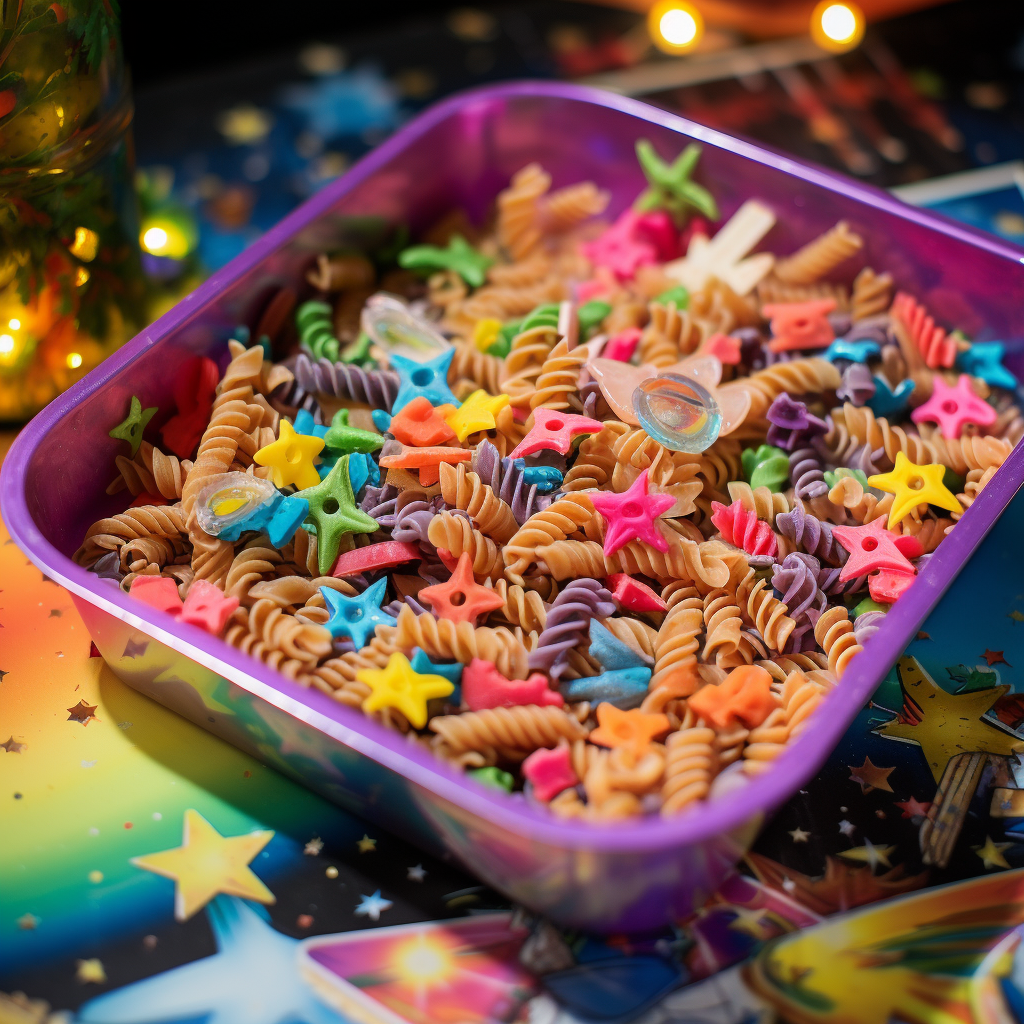
Learning Activities
While a tuff tray is a fantastic tool for play, it can also be used for more structured learning activities. For example, the tray could be used for simple science experiments, such as exploring the properties of water and different objects (which items float or sink?), or observing the effects of mixing different substances.
Puzzles can also be completed in the Tuff Tray, with the raised sides of the tray helping to keep all the pieces contained. This can be particularly beneficial for larger puzzles or those with smaller pieces.
Even activities like sorting and counting can be made more engaging with a tuff tray. For example, children could sort different coloured pom poms into sections of the tray, or count out objects into different containers.
Outdoor Play
While a Tuff Tray can certainly be used indoors, it’s also a fantastic tool for outdoor play. The tray can be filled with water for splashing and exploration, or used as a platform for messy play with mud or sand.
Outdoor use of the tuff tray also provides opportunities for exploration of natural materials. Children could collect leaves, stones, or flowers to examine in the tray, or use these materials in their creative and imaginative play.
The Importance of Tuff Tray Play in Child Development
The benefits of Tuff Tray play extend far beyond the immediate enjoyment and engagement they provide. These versatile trays also support a range of developmental areas, making them a valuable tool in early childhood settings.
Fine Motor Skills
Many tuff tray activities involve manipulation of materials, whether it’s moulding playdough, painting with a brush, or picking up small objects. These actions help to develop fine motor skills, which are crucial for tasks like writing, buttoning clothing, and using utensils.
Sensory Development
Tuff trays provide a wealth of opportunities for sensory exploration. Children can touch, see, and even smell the materials in the tray, stimulating their senses and helping them to learn about the world around them. Sensory play can also support language development, as children learn to describe what they are experiencing.
Cognitive Development
Through tuff tray activities, children can learn about concepts such as cause and effect (what happens when I mix these two substances?), sorting and categorising (can I group these objects by colour?), and problem-solving (how can I build a tower with these blocks?).
Social Skills
When used in a group setting, tuff trays can even help to foster social skills. Children learn to share the space and materials, negotiate roles and rules for their play, and communicate their ideas and feelings.
What Are You Waiting For?
Tuff trays are far more than just a simple tray. They are a platform for learning, development, and endless creativity. Whether used in a home, nursery, or school setting, they offer a wealth of opportunities for children to explore, create, and learn. So, why not introduce a Tuff Tray to your child’s playtime and watch their imagination and skills soar? If you’d like to learn more about tuff trays or need to bounce some ideas, you can contact me and I’d be happy to help.

